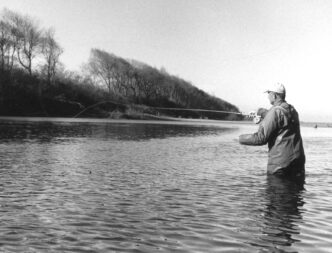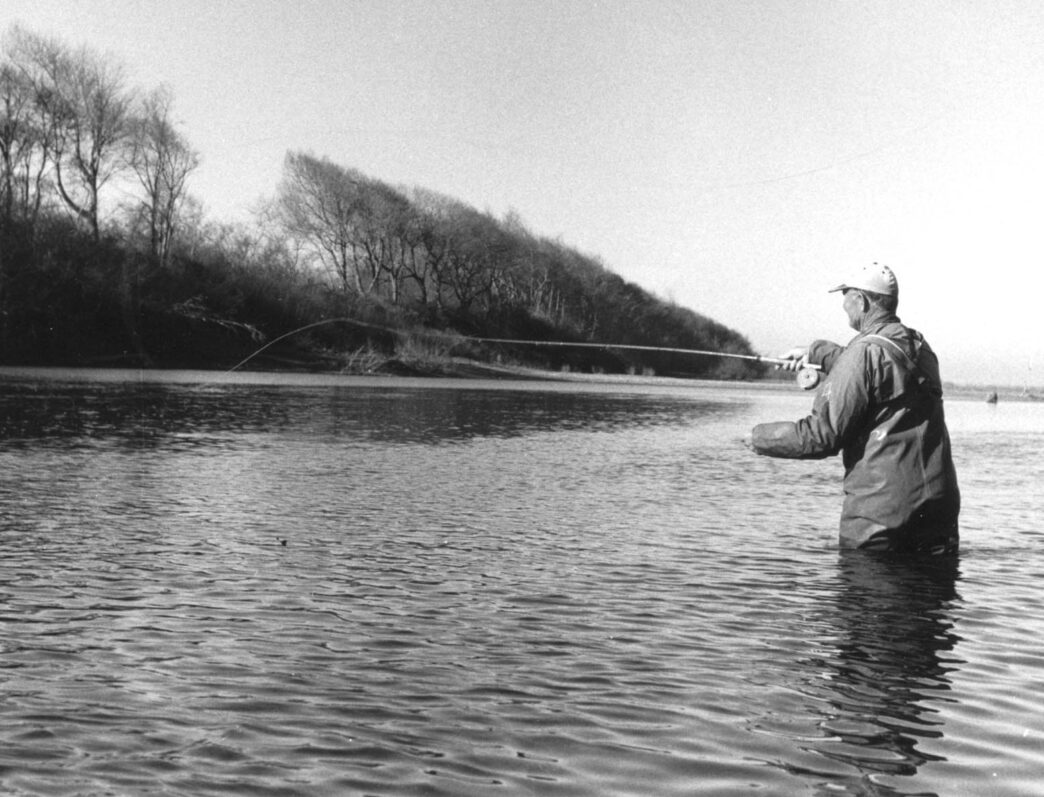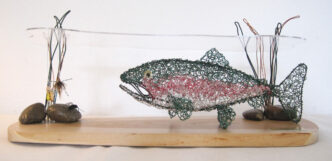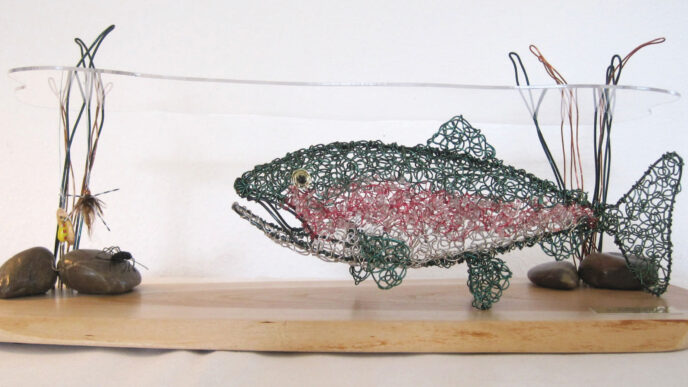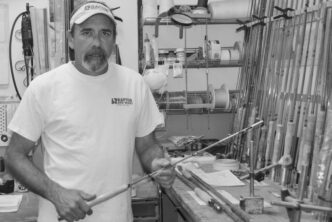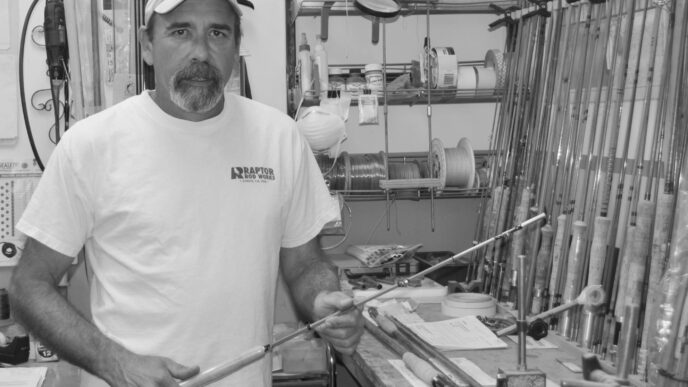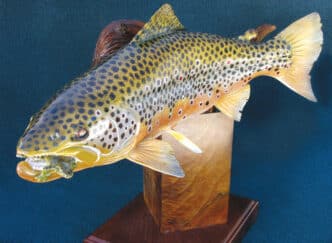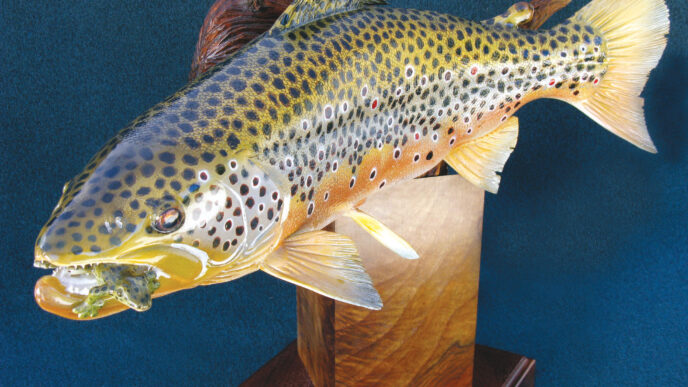Nelson Rossig, a Wiyot tribal elder, passed away on September 11, 2010, at the age of 101. Born on December 3, 1908, at Bucksport on California’s Humboldt Bay, he began fishing and hunting at a very young age, mentored by his uncle, Jerry James. Growing up on California’s North Coast, he experienced an abundance of nature that has now receded into the collective memory of a past generation. As a young boy, Nelson would routinely go out at low tide and collect enough shellfish for dinner. If he brought home more than was needed, Nelson was sent to put them back from where he took them. Though there was an abundance, he was not allowed to take more than would be eaten.
As he got older, Nelson could be seen rowing his boat beyond the relative safety of Humboldt Bay onto the expanse of the Pacific Ocean to troll for salmon. Nelson saw riffles on the Eel River so choked with salmon that if you stood in the water, you would be knocked off your feet by the sheer numbers of fish swimming by. He cast a fly early on the Smith River, catching salmon over 60 pounds in the 1930s. His biggest steelhead from the Eel River was 19 pounds 8 ounces. Surprisingly, it was caught in 1985.
Nelson began fly fishing as a teenager with local pioneer Joe Dickerson. He worked for a time guiding clients for Harry Williams, trolling lures at the mouth of the Klamath River. During this time, he and Ken Mallar began fly fishing for the salmon in the Klamath’s tidewater. They would often land 20 to 30 fish a day. In 1961, they were the only fly fishermen among the trollers. Not long after, others caught on, and a crowded lineup ensued. As the 1960s came to a close, the trollers rebelled by trying to enact an ordinance prohibiting fishing from an anchored boat in the Klamath River estuary, an obvious stab at fly fishermen. Nelson went to court and helped to defeat this ordinance. Fly fishing the Klamath estuary was no longer the same, however, and Ken and Nelson never again anchored directly in the river channel to cast their flies.
An avid fly tyer, Nelson earned the nickname “the Brown Bucktail” from a fly he originated. The fact that this fly earned him a nickname was a testament to the confidence he and others placed in it. The fly was tied to imitate the shrimp found in the Eel River estuary. It’s easy to see how the Brown Bucktail morphed into what’s known today as the Brown Shrimp. Early in the fall season, Nelson would spend a good amount of time fishing the tidewater, which earned him a second nickname, “Tidewater,” from his friend Ben Anderson.
Nelson was a strong advocate for fishermen, using his influence to maintain river access for sportsmen. He served on the Humboldt County Grand Jury, volunteered many years on the Fish and Game Advisory Committee, and also served on the Humboldt Fish Action Council, which was involved in rearing and restocking salmon in Humboldt Bay streams. Nelson also had a hand in introducing Washington State summer steelhead to the Eel River. He told me a story about how he convinced a friend who was working at the Mad River Hatchery to bring down to the Eel River some of the Washougal summer steelhead smolts that were being reared at the hatchery. The smolts were released somewhere around Rio Dell. His friend was reprimanded over the incident, and Nelson claims this is how Skamania-stock summer steelhead were introduced into the Eel River gene pool.
After retiring as a longshoreman at the age of 65, Nel-son spent many days on the Eel River. He usually fished alone, savoring solitude and avoiding crowds. Nelson would take time to enjoy the day and cover the water thoroughly. Afterward, having stowed his gear, he would sit on his tailgate, surveying the river. There was no rush to his fishing, and he didn’t need to catch fish. A strong pull to be near the river brought Nelson back often, an old friendship too strong for only occasional visits.
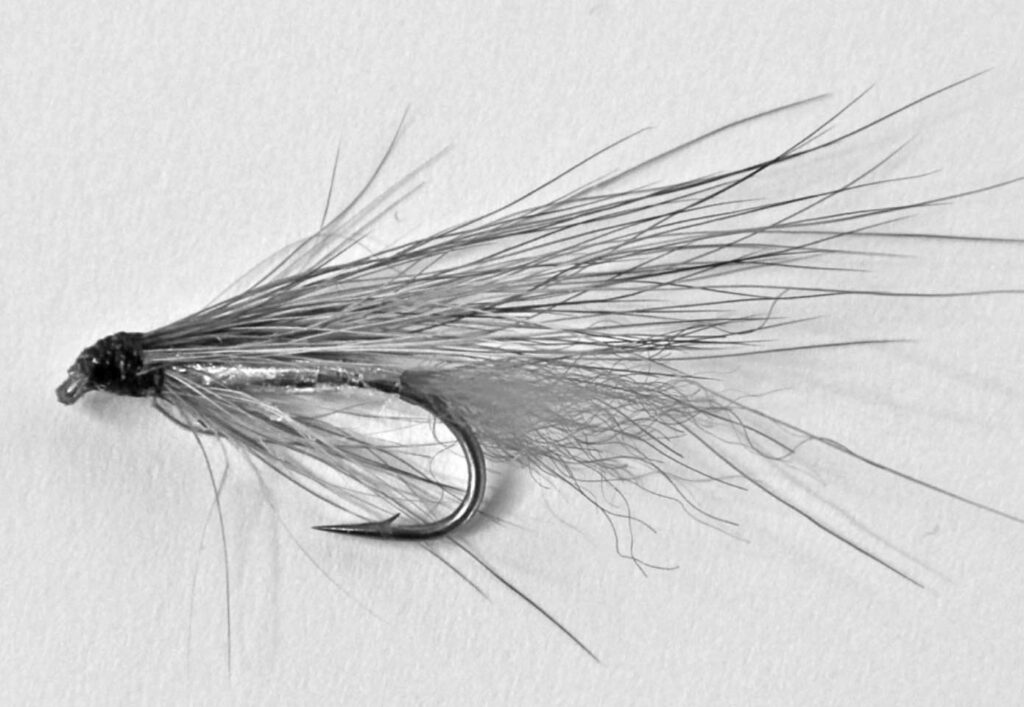
Nelson continued to drive down to the river from his home in Eureka until he was 99 years old. The wading was a little more difficult, and his casts a little shorter, but he would find a smooth stretch of gravel with fish not too far out of reach and lay out his line with a good cast. When Nelson turned 100, he didn’t even bother going down to the DMV office to renew his driver’s license. He knew better. At that point, he got rid of his boat and slowly started giving away some of his fishing equipment.
Nelson did some traveling on what he called “safaris,” fishing trips to Costa Rica, the Bahamas, Christmas Island, Alaska, and the Florida Keys. He drove out to Florida from California, towing his boat, so he could fish on his own. Nelson also pioneered the salmon fishing on Kodiak Island for local Eureka fishermen.
Nelson Rossig’s presence on the river is missed by those who knew him, and for those who didn’t, please tip your hat to the passing of one of the North Coast’s pioneering fly fishermen. Nelson was part of a generation who made their own fly rods, tied all their own flies, and spliced the lines they cast to fit the water and conditions on any particular day. We all cast a line in his shadow.



